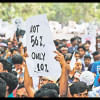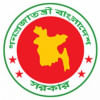Quota reform alone can't solve youth unemployment

Now that the dust has temporarily settled from the recent agitation for reform of the quota system in government jobs, it is time to calmly reflect on the next steps needed to establish a system that is fair and equitable and makes best use of the potential in our youth. There are economically and socially deprived sections of society that still need special support through government intervention such as the quota system.
The agitating students had asked for a review of the quota system, and the government announced its abolishment. Fortunately, the baby wasn't thrown out with the bathwater as the door was left ajar for making special provisions for disadvantaged sections of society. Total abolition of quota for needy freedom fighters is not justified, but other ways must be found to reward freedom fighters and their descendants, and also support other economically disadvantaged people.
There are compelling reasons to look beyond the quota system for youth employment in Bangladesh as the much-coveted government positions are very small in number. Bangladesh's biggest asset could be the youthful workforce who constitute about 70 percent of the population. Unfortunately, the number of unemployed youth stands at about 45 million of which a very negligible fraction will ever find higher level employment in the government services because an overwhelming majority, including children of freedom fighters, don't have the opportunity to acquire the desired education needed to pass the qualifying exams. The situation is worse in areas outside the big urban regions and the abolition or reform of the quota system is not very important to most young people who need jobs. Some could be helped by opening up the unfilled 40,000 lower rung government jobs. However, such positions that are a carryover from colonial times should be phased out and replaced by high-skill jobs.
Bangladesh has one of the largest tertiary education enrolments in the developing world, but it is alarming that almost a third (about 2.5 million) of college and university leavers are reported to be unemployed. Of the approximately 5,000 applicants who qualify in the written and viva exams for the government cadre positions, only about 2,000 end up getting one. So merely abolishing or modifying the quota will have little bearing on those who do not succeed. Massive unemployment of educated youth is waste of valuable human resources, and the primary concern of the government should be to make quality education and skill development readily available to young people from all strata of society. Hopefully, the progressive students will include this as one of their future demands.
About one million tertiary students graduate every year in Bangladesh and with the high unemployment among the educated youth, it is difficult to understand why we have to hire 75,000 mid-level managers and technicians from overseas for our garment and other industries. This is a clear indication that there is a huge misfit between the skills we require and what is produced by our tertiary sector. What is the point of overproducing MBA and business graduates with poor knowledge of English when we actually need large numbers of youth with technological proficiency? Has the government or any of its ministries or instruments ever carried out a definitive study to determine the number of teachers, technologists, doctors, agricultural scientists and other professionals we really need now and will need in the next 10 or 20 years? What long-term planning has been carried out by the education ministry, UGC, ministry of science and technology, and the planning ministry to determine our actual needs, for manpower and technology, in the tertiary sector?
Bangladesh has shown remarkable economic growth of over 6-7 percent over a sustained period and the governments can rightly claim credit for their stewardship, but let us not forget the farmers, garment workers and expatriate labourers whose sweat and poorly remunerated labour has made this possible. The growth would have been much bigger if rampant corruption had been controlled and good governance been in place. Mega projects can contribute a bit more, but the biggest sustainable growth will come from utilising the combined intellectual potential of our huge youthful workforce. Their innate intellectual capability is undisputed, and intellectual capital can be our most potent weapon for achieving economic growth of well over 10 percent required for sustainable development necessary for promotion to a developing nation in 2024, and even more so for progressing towards a developed economy by 2041. But this will need to be complemented and supported by excellence in higher education underpinned by a very strong science and technology base. But how well prepared are we for this educational and technological transformation?
Quality higher education can only be built on a strong base of primary and secondary education. But for now, let us concentrate on youth about to enter the workforce. There is no doubt that our current and future generations of workers must be technologically proficient. The government should carry out a study to determine the number of different professionals we need in different employment sectors and set need-based post-secondary goals accordingly. To cater to the expected increase in manufacturing and skills-based jobs, many more post-secondary technical and vocational institutions need to be set up to produce a trained workforce of various categories of technical and supervisory positions. Technically trained youth can also start their own businesses and take up skilled jobs inside and outside the country. They should be well remunerated and accorded due social status so that they don't feel pressurised to seek unnecessary university degrees.
Higher education institutions in Bangladesh should aim to produce large numbers of very good teachers for every level of education, and adequate numbers of health, agriculture and technology professionals and other technology-based professionals for various manufacturing sectors. To meet increasing demands for a technologically proficient workforce, the number of such training institutions for professionals could be expanded as required, if necessary by modifying the curricula of general universities. Bangladesh expects to be officially admitted as a developing country in 2027 and hopes to become a developed nation in 2041. Preparations for that must start right now to develop and use our own intellectual and technological capabilities to ensure that the development agenda is no longer externally driven. A new and additional type of workforce will be required for that.
No developing country can transition to a developed economy without internationally competitive postgraduate research, and transfer of the resulting technology to industry for product development, wealth generation and job creation. The less than satisfactory international ranking of our major universities, and the almost near absence of any national R&D footprint, are a reflection of where we really stand. This is not necessarily because our standards have fallen, but because other countries have spent much more and progressed much faster in research and innovation. The government will need to seriously make the necessary investments in education and research, build the required science and technology platform, and prepare and retain the highly trained workforce needed for elevation first to the status of a developing nation and then to a developed country. Intellectual capital and the technological enabling of our youthful workforce will be our major weapons.
Call for reform of the quota system is justified, but ultimately it is the provision of satisfying and productive employment for all that really matters.
Professor Dr Ahmed Abdullah Azad is a retired academic and medical researcher. Email: [email protected]









Comments